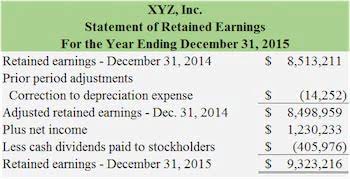
We may earn a commission when you click on a link or make a purchase through the links on our site. Larger organizations tend to employ a different POHR in each department which improves the accuracy of overhead application even though it increases the amount of required accounting labor. After reviewing the product cost and consulting with the marketing department, the sales prices were set. The sales price, cost of each product, and resulting gross profit are shown in Figure 6.6. For the past 52 years, Harold Averkamp (CPA, MBA) hasworked as an accounting supervisor, manager, consultant, university instructor, and innovator in teaching accounting online.
What Apple Does Well: Cost Management (NASDAQ:AAPL) – Seeking Alpha
What Apple Does Well: Cost Management (NASDAQ:AAPL).
Posted: Wed, 03 Aug 2011 07:00:00 GMT [source]
What is the Predetermined Overhead Rate Formula?
A predetermined overhead rate, also known as a plant-wide overhead rate, is a calculation used to determine how much of the total manufacturing overhead cost will be attributed to each unit of product manufactured. The rate is determined by dividing the fixed overhead cost by the estimated number of direct labor hours. It is often difficult to assess precisely the amount of overhead costs that should be attributed to each production process. Costs must thus be estimated based on an overhead rate for each cost driver or activity. It is important to include indirect costs that are based on this overhead rate in order to price a product or service appropriately.

Estimated Total Manufacturing Overhead Costs
Once a company determines the overhead rate, it determines the overhead rate per unit and adds the overhead per unit cost to the direct material and direct labor costs for the product to find the total cost. Added to these issues is the nature of establishing an overhead rate, which is often completed months before being applied to specific jobs. Establishing the overhead allocation rate first requires management to identify which expenses they consider manufacturing overhead and then to estimate the manufacturing overhead for the next year. Manufacturing overhead costs include all manufacturing costs except for direct materials and direct labor.
4 Compute a Predetermined Overhead Rate and Apply Overhead to Production
- The overhead rate allocates indirect costs to the direct costs tied to production by spreading or allocating the overhead costs based on the dollar amount for direct costs, total labor hours, or even machine hours.
- The predetermined overhead rate can be either overapplied or underapplied, depending on how accurate the company estimated the manufacturing overhead.
- When Job MAC001 is completed, overhead is $165, computed as $2.50 times the $66 of direct labor, with the total job cost of $931, which includes $700 for direct materials, $66 for direct labor, and $165 for manufacturing overhead.
- This allocation process depends on the use of a cost driver, which drives the production activity’s cost.
To account for these changes in technology and production, many organizations today have adopted an overhead allocation method known as activity-based costing (ABC). This chapter will explain the transition to ABC and provide a foundation in its mechanics. The predetermined overhead rate is used to price new products and to calculate variances in overhead costs. To calculate a predetermined overhead rate, divide the manufacturing overhead cost by the units of allocation. This is related to an activity rate which is a similar calculation used in Activity-based costing. A pre-determined overhead rate is normally the term when using a single, plant-wide base to calculate and apply overhead.
Direct Costs vs. the Overhead Rate

This can result in abnormal losses as well and unexpected expenses being incurred. Adam Hayes, Ph.D., CFA, is a financial writer with 15+ years Wall Street experience as a derivatives trader. Besides his extensive derivative trading expertise, Adam is an expert in economics and behavioral finance. Adam received his master’s in economics from The New School for Social Research predetermined overhead rate and his Ph.D. from the University of Wisconsin-Madison in sociology. He currently researches and teaches economic sociology and the social studies of finance at the Hebrew University in Jerusalem. Our mission is to empower readers with the most factual and reliable financial information possible to help them make informed decisions for their individual needs.
Hence, the overhead incurred in the actual production process will differ from this estimate. Under cost accounting, there is always an «allocation base» that links the overhead costs to the cost object. Since it is arduous to apply overhead cost to each individual cost object, such as a shoe, companies tend to use the average of an aggregate number of objects. So the shoe manufacturer might spread overhead costs over 10,000 shoes rather than calculate each one separately. The predetermined overhead rate, also known as the plant-wide overhead rate, is used to estimate future manufacturing costs. Let’s assume a company has overhead expenses that total $20 million for the period.
- A manager may notice that the overhead rate is usually about one and a half times the cost of direct labor for a given project.
- Therefore, the predetermined overhead rate of TYC Ltd for the upcoming year is expected to be $320 per hour.
- Unexpected expenses can be a result of a big difference between actual and estimated overheads.
- It involves taking a cost that is known (such as the cost of materials) and then applying a percentage (the predetermined overhead rate) to it in order to estimate a cost that is not known (the overhead amount).
- If an actual rate is computed monthly or quarterly, seasonal factors in overhead costs or in the activity base can produce fluctuations in the overhead rate.
- The application rate that will be used in a coming period, such as the next year, is often estimated months before the actual overhead costs are experienced.
- Unless a cost can be directly attributable to a specific revenue-generating product or service, it will be classified as overhead, or as an indirect expense.

- The second step is to estimate the total manufacturing cost at that level of activity.
- Under cost accounting, there is always an «allocation base» that links the overhead costs to the cost object.
- The controller of the Gertrude Radio Company wants to develop a predetermined overhead rate, which she can use to apply overhead more quickly in each reporting period, thereby allowing for a faster closing process.
- If this is consistent for many projects in that department over the past year, then predetermined overhead for that department would be computed by multiplying the estimated cost for direct labor by 150%.
- Since the rate is based solely on estimates and not confirmed costs, the end results may not always match the actual manufacturing overhead rates.
- As per the budget, direct labor cost and raw material cost for the period is expected to be $40 million and $60 million respectively.


